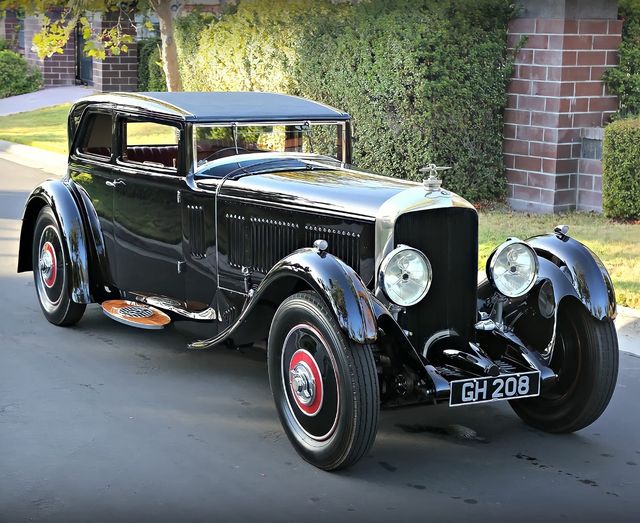The regular Bentley 6½ Litre and the high-performance Bentley Speed Six were sports and luxury cars based on Bentley rolling chassis in production from 1926 to 1930.
The Speed Six, introduced in 1928, would become the most successful racing Bentley.
Two Bentley Speed Sixes became known as the Blue Train Bentleys after their owner Woolf Barnato’s involvement in the Blue Train Races of 1930.
By 1924, Bentley decided to build a larger chassis than the 3 Litre, with a smoother, more powerful engine. The new chassis would be more suitable for the large, heavy bodies that many of his customers were then putting on his sports car chassis, and the resulting car would be more refined and better suited for comfortable general motoring
Realizing from the impromptu race that the Sun had no performance advantage over Rolls-Royce’s latest development, W. O. increased the bore of his six-cylinder engine from 80 millimeters (3.1 in) to 100 millimeters (3.9 in). With a 140 mm (5.5 in) stroke, the engine had a displacement of 6.6 L (6,597 cc (402.6 cu in)) Like the four-cylinder engine, Bentley’s straight-6 included overhead camshaft, 4 valves per cylinder, and a single-piece engine block and cylinder head cast in iron, which eliminated the need for a head gasket. In base form, with a single Smiths 5-jet carburettor, twin ignition magnetos, and a compression ratio of 4.4:1, the Bentley 6½ Litre delivered 147 horsepower (110 kW) at 3500 revolutions per minute.
The model was available as a road car for everyday use. Barnato ‘s personal Speed Sixes had bespoke bodywork by various coachbuilders, and the Criminal Investigation Department of the Western Australia Police operated two saloon-bodied examples as patrol cars.
In March 1930, Barnato raced against the Blue Train in a Speed Six with H. J. Mulliner saloon coachwork, reaching his club in London before the train was due in the station at Calais. It had generally been believed that the car in the race was a Gurney Nutting Sportsman Coupé, but the coupé had been delivered to Barnato in May 1930, more than a month after the race.
The racing version of the Speed Six had a wheelbase of 11 feet (132 in; 3,353 mm) and an engine with a compression ratio of 6.1:1 that produced 200 hp (150 kW) at 3500 rpm. Successful in racing, these cars won the 24 Hours of Le Mans in 1929 and 1930 with Bentley Boys drivers “Tim” Birkin, Glen Kidston, and Woolf Barnato, the Chairman of Bentley Motors

